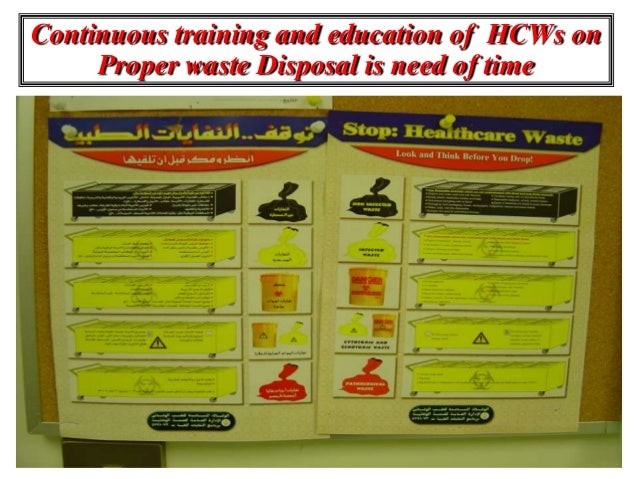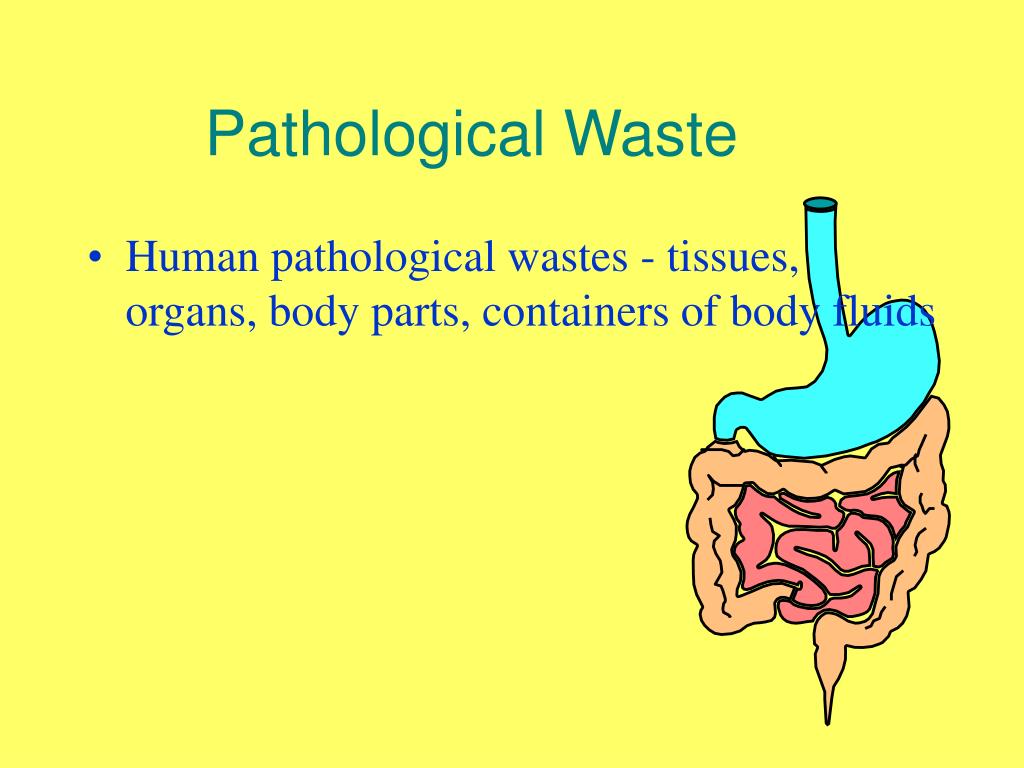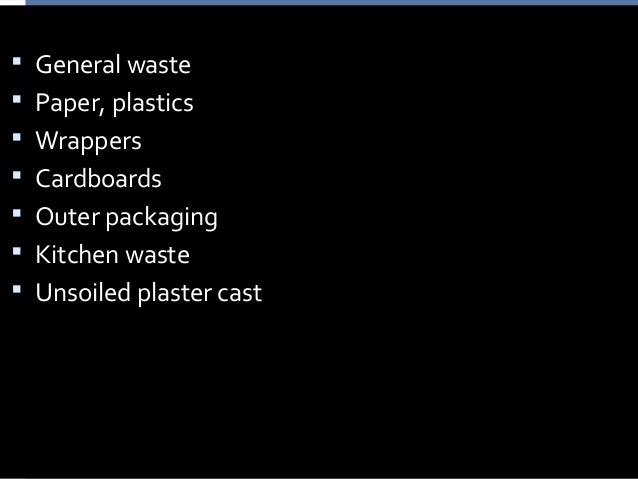
This method of disposal is very effective at destroying pathogens and preventing the spread of infection. Incineration: Incineration is the process of burning waste material to ash.

There are several methods of disposing of pathological waste, including: 1. Pathological waste must be disposed of in a manner that prevents the spread of infection and protects public health. Pathological waste can include, but is not limited to, tissues, organs, body fluids, blood, and body parts.
#Pathological waste includes how to#
See How to Dispose of Sharps for instructions.Pathological waste is defined as any waste material derived from human or animal tissue, organs, or body fluids that are infected with a pathogen.Whether contaminated or not, strict packaging and container restrictions apply. DisposalĬlose and seal with tape when ready for disposal and place in Red Biohazardous Waste Collection Bins with biohazard symbol, collected by EH&S-EMF at building collection sites. The disposal method for sharps depends on whether they are contaminated with hazardous material and the type of contaminant. Contact for questions about waste procedures for high-containment laboratories. Campus Address ( La Jolla or Hillcrest campus Word files).Container must be leakproof, rigid, and puncture-resistant. Gloves, kimwipes, wrappers, and other lab debris should not be disposed of within sharps containers. Non-sharps items should not be disposed of in a biohazard sharps container. For example, a needle connected to syringes or tubing. Sharps connected to other equipment can be disposed of in sharps containers. Do not dispose of sharps in contact with chemicals or radioactive materials in a biohazard sharps container. Sharps in contact with biological or infectious materials are disposed of as biohazard sharps. Common sharps use include hypodermic needles, needles with syringes or tubing, blades, Pasteur pipettes, blood vials, items capable of cutting or piercing, and all glassware if contaminated with infectious, potentially infectious, or genetically modified materials. Sharps are devices that have acute rigid corners, edges, or protuberances capable of cutting or piercing.

Pour treated liquids down laboratory sink using the appropriate personal protective equipment. You will receive a response within five (5) working days regarding approval. Disposal method (sewering, hazardous waste pickup).If your laboratory wishes to inquire about the use of alternative disinfectants to inactivate liquid biohazardous waste, please send an email with the following information: Steam sterilize without bleach in an autoclave with a Biomedical Waste Permit from San Diego County Health Department. See How to Determine if Autoclave Permit Is up to Date and Tested.įor chemical disinfection of liquid biohazardous waste, the only university-wide approved disinfectant for UC San Diego is bleach.Dilute liquid waste with bleach (1 part bleach to 9 parts liquid waste) and let waste sit exposed to the bleach for 30 minutes before pouring it down the drain.Label flask identifying media waste and bleach (9:1) Store in a secondary container if outside biosafety cabinet. Liquid biohazardous cultures or specimens, including infectious, potentially infectious, or genetically modified organisms. Transfer to red plastic can with red bag liner. Infectious: Place carcasses and animal waste in a clear plastic bag and close.Noninfectious (excluding mice and zebrafish): Place carcasses and animal waste in a clear plastic bag and close.Chemicals: Place carcasses and animal waste in a clear bag(s), attach appropriate hazardous waste tag, put carcass in lab freezer and request hazardous waste pick-up.The Animal Care Program, (858) 534-6064, oversees collection and disposal. Red pathological waste container with biohazard symbol collected by EH&S-EMF at ACP collection sites.

Off-site incineration by biowaste vendor. Campus Address ( La Jolla or Hillcrest campus Word files).

Transfer to red pathological waste container with tight-fitting lid and a red bag liner. Animals and animal body parts if the animal is infectious, potentially infectious, or genetically modified, for example, all genetically modified animals, including all mice and zebrafish.


 0 kommentar(er)
0 kommentar(er)
